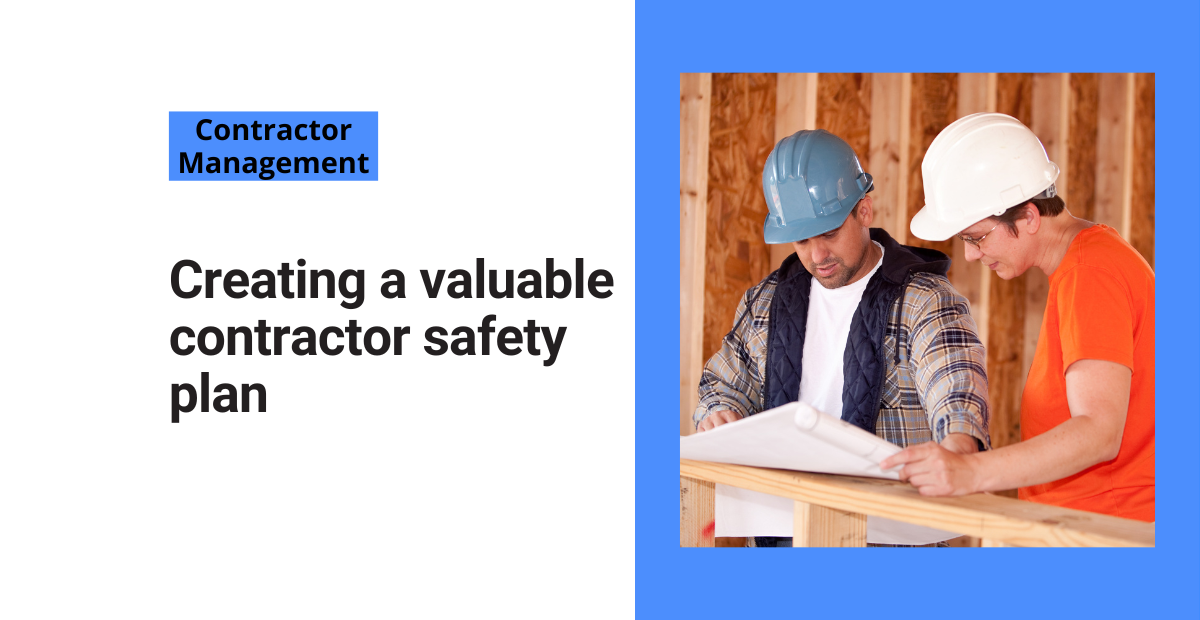The point of a making a contractor safety plan is to carefully consider all the hazards your team might face on a jobsite. But many of these documents are subpar at best. And that’s because contractors typically copy other business’ safety plans and make minor, ineffective adjustments.
To create a valuable safety plan, consider using examples as templates only. Customize the safety plan to specific industries or projects. That way, you’ll be well-prepared to handle safety incidents. Plus, a higher-quality plan can boost your reputation, making new contracts even easier to win.
Free checklist!
Use this checklist to make sure you’ve properly onboarded and documented new contract employees.
Reasons why you need a contractor safety plan
The main reason to have a safety plan is to proactively protect your workers. The planning process forces you to think about the important steps you’ll take to prevent incidents. And this makes you better prepared to handle issues as they arise.
Your contractor safety plan should outline how you’ll complete a project, prevent hazards, and respond to incidents. The more specific your plan, the more likely it is to provide actual value. And if you protect your workers, you’ll protect your business too.
Brand reputation
Contractor safety plans are not mandatory for OSHA compliance. But they can protect you from heavy fines because they show that you’ve:
- Taken preventative steps to avoid injuries/deaths
- Given workers all the resources and guidelines they need for safe work practices
- Made proactive policies to prevent incidents
- Set a standard for your team’s safety behaviors and habits
Having a site safety plan may also help you win contracts. No one wants to work with a contractor who neglects worker safety and OSHA regulations.
A safety plan gives potential customers and partners peace of mind by showing your dedication to incident prevention. It also makes you seem trustworthy, detail-oriented, and organized. These are all qualities that businesses want in their contractors. Some companies may require a detailed safety plan before they’ll even consider hiring you.
Over time, the measures that you take to avoid safety incidents will build your brand reputation. And that can fuel your project pipeline for years if you use it to your advantage.
Elements of a contractor safety plan
Your safety plan shouldn’t be the same for every contract. That’s because projects have different inputs. If you’re unsure what to put in your safety plan, start with these fundamental elements:
Project leaders: Who oversees the contractor safety plan? Make a list of all the people who will make sure the project goes according to the plan’s guidelines.
Training: Explain all the mandatory safety training that workers will need. This includes things like orientation, certifications, assessments, etc. Include who will conduct the training as well.
Disciplinary Procedures: Decide how you will enforce safety rules. Make sure to explain who oversees discipline and what system you will use to decide disciplinary actions.
PPE Requirements: List out the PPE that workers will have to use at the jobsite.
Incident Management: Explain your incident management procedures. Include all the steps you will take after an incident occurs and what system you will use to prevent future incidents. Also mention how you will organize reports and track action items.
Emergency Response: Provide important information like who to contact in case of an emergency.
Other elements that you might consider include:
Equipment: If your worksite has heavy equipment, include safety protocols for it in your plan. Things like critical lift calculations, maintenance schedules, and inspection guidelines are some elements to consider.
Team Communication: Outline how you’ll notify workers of important process changes and updates. Will it be through regular standup meetings, texts, emails, etc.?
Management of Change (MOC): If your process falls under OSHA’s MOC requirements, add details about how you will track critical action items and document process modifications.
Job Hazard Analysis (JHA): If you complete a JHA before starting a project, add the findings to your initial safety plan. This is essential if your process is complicated or involves many inputs.
Making it relevant
Your contractor safety plan shouldn’t look exactly like another’s. It should be unique to your team, industry, and project. A good example of this is a comparison between a construction safety plan and a manufacturing safety plan.
While they might have a similar structure, the safety concerns within a production plan are completely different from those of a construction site.
Many contractors simply find a safety plan online, input their company information, and pass it off as their own plan. Using another plan as an outline is great, just make sure that you’re really considering your team’s needs.
Putting together the safety plan
The last step is to review your document. Get rid of any filler language and make sure the format is user-friendly. A table of contents will make the safety plan easier to read.
Remember, the safety plan is for both your team and the managing company. It should add value for both audiences. Having a clean, easy-to-follow layout and language ensures that anyone can benefit from the guidelines in the plan.
The best part about this process is that you won’t have to do it for every contract. Once you have a solid contractor safety plan, you can use the format and much of the content in future projects. Make sure to change the project-specific contents like contact information, hazard inspections, equipment details, etc. If you do this, you should have a high-quality document that builds brand reputation and creates safer jobsites and processes for all your workers.





